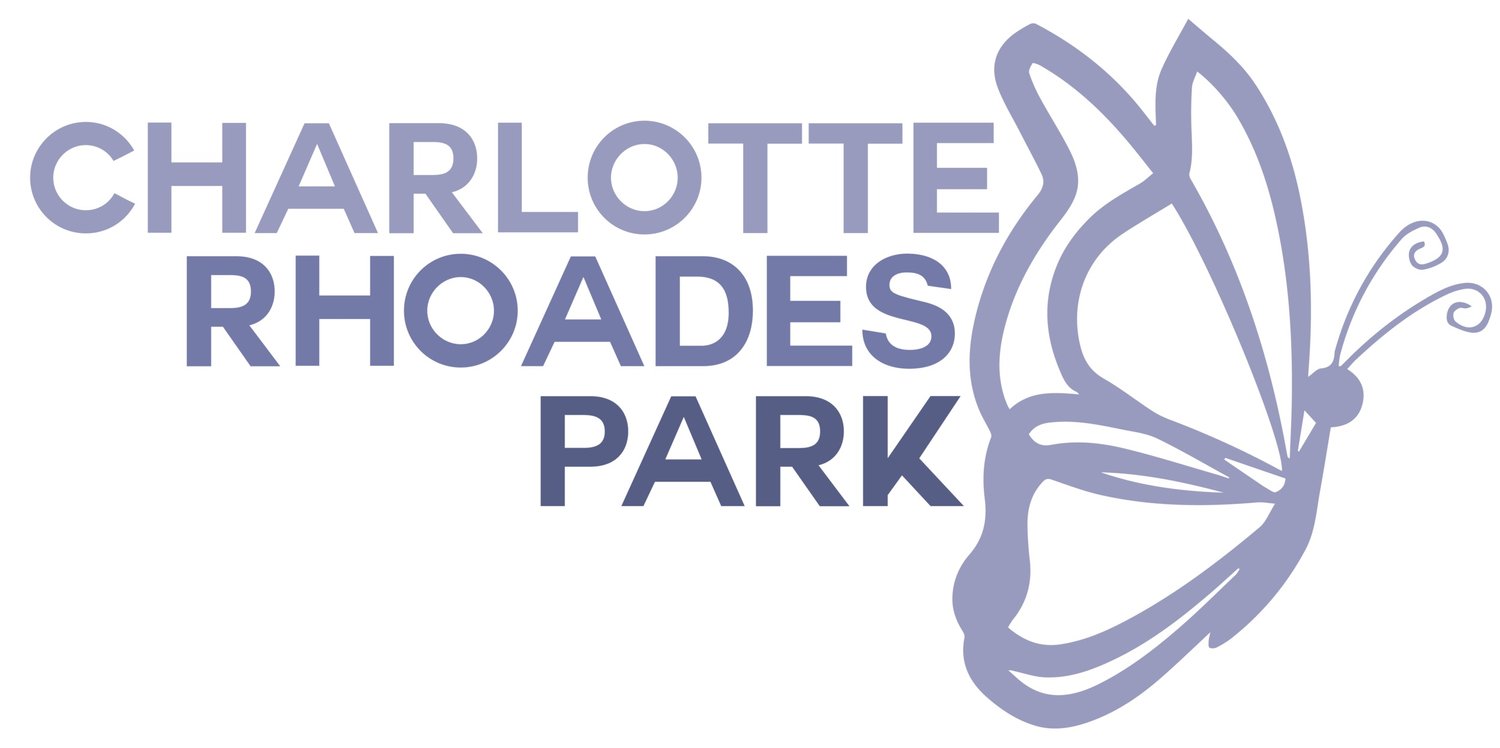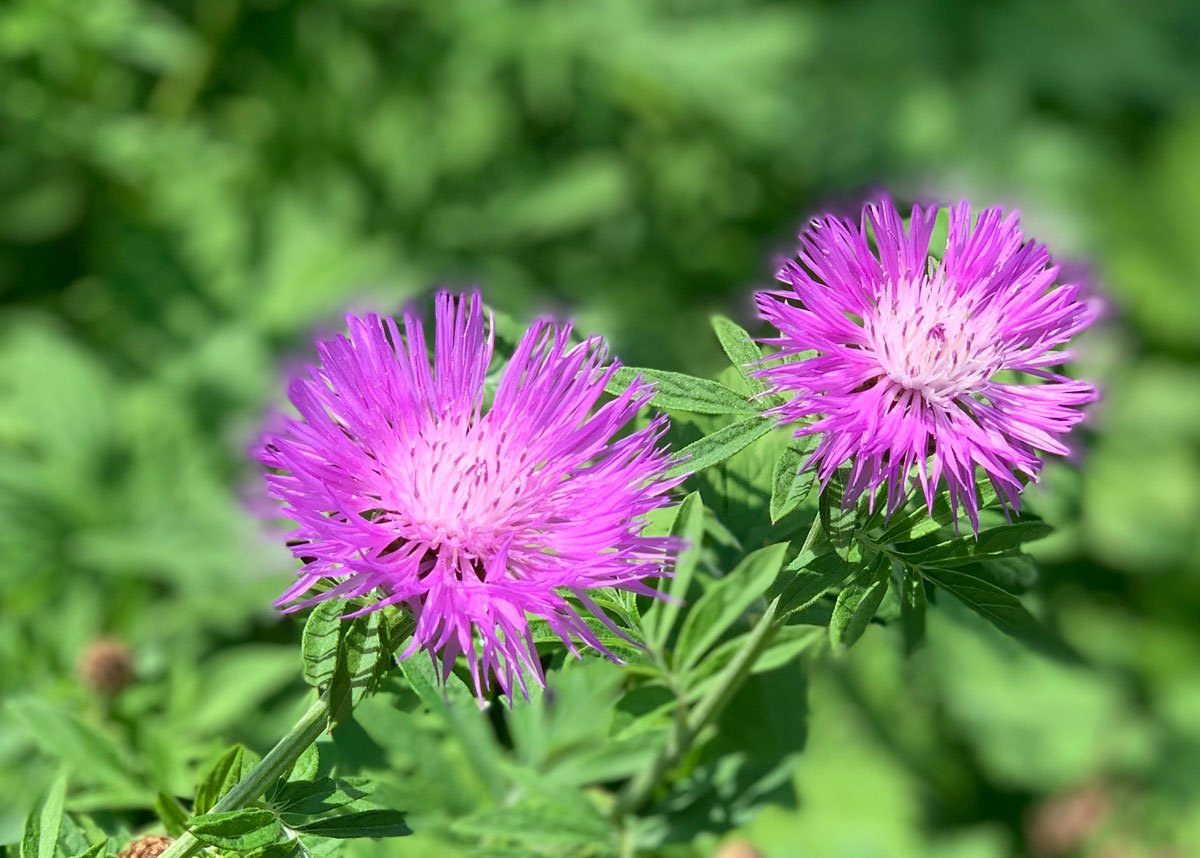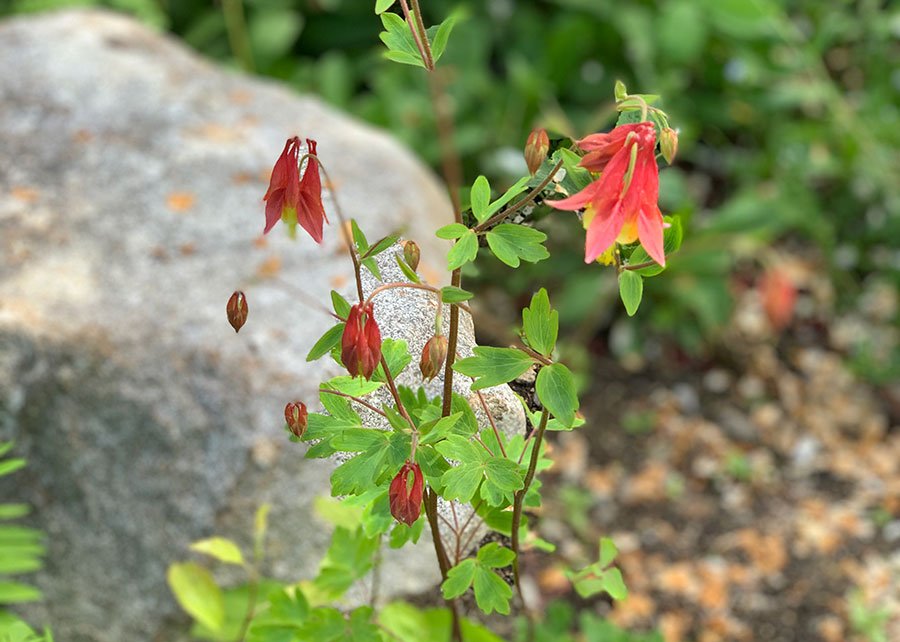Lavatera trimestris 'Loveliness'
Lavatera trimestris is an upright annual that grows in a shrubby tall form. It is planted as an annual in Maine, and it has large, saucer shaped white to pink flowers in midsummer. Rounded medium green leaves have heart-shaped bases and 3-7 shallow lobes. It is a good cut flower.
Hemerocallis 'Stella D'Oro'
Rabbit tolerant. 'Stella de Oro' features profuse 2.75-inch diameter yellow flowers with ruffled edges and deeper yellow throats. Individual flowers open for one day on a compact plant. This multiple AHS award winner has become perhaps the most popular daylily in cultivation in large part because of its compact size, vigorous growth, profuse bloom and extremely long bloom period. For best performance, daylilies should be divided every 3-4 years in either fall or spring. It is rabbit tolerant, but, use deer repellent!
Geranium ‘Gerwat Rozanne’
Cranesbill geranium Rozanne is a hybrid clump forming geranium that typically grows in a mound shape, often as a groundcover. It is noted for its non-stop flowering habit and has exceptional heat tolerance. Side stems may be removed or trimmed at any time to control spread. Rozanne is an exceptional, unique, and unsurpassed geranium selection for any garden and is rabbit and deer tolerant.
Gaillardia grandiflora 'Arizona Sun'
Blanket Flower is one of the easiest perennial wildflowers to establish. Blooms provide nectar for many butterflies and native bees. 'Arizona Sun' has large, 3 to 4 in. wide, fiery orange red blossoms with yellow-tipped petals and is very drought and salt tolerant.
Echinacea purpurea 'White Swan'
Showy daisy-like white coneflowers (to 5" diameter) bloom throughout summer atop stiff stems clad with coarse, dark green leaves. Good fresh cut or dried flower. Dead flower stems will remain erect well into the winter, and if flower heads are not removed, the blackened cones may be visited by goldfinches or other birds that feed on the seeds. Deer tolerant.
Echinacea 'Cheyenne Spirit'
‘Cheyenne Spirit’ was introduced in 2012 and has won top awards for garden performance. It comes in a mix of colors including gold, scarlet, orange, rose-red, cream, purple and yellow and all colors attracts birds and butterflies. Dead flower stems will remain erect well into the winter, and if flower heads are not removed, the blackened cones may be visited by goldfinches or other birds that feed on the seeds. Deer tolerant.
Digitalis lutea
: Yellow Foxglove is a short-lived herbaceous perennial or biennial. All parts of the plant are poisonous; however, the plant is less toxic than the common foxglove (D. purpurea). The species is hermaphrodite (has both male and female organs) and is cross-pollinated by long tongued bumblebees. It can naturalize or persist at a site for many years. Deer and rabbit resistant.
Coreopsis verticillata
Coreopsis verticillata is a native airy yellow perennial from the daisy family that grows in dense bushy clumps. The plants can be sheared in mid to late summer to promote fall re-bloom. It has been a popular garden flower since the 19th century.
Coreopsis grandiflora 'SunKiss'
Sunkiss coreopsis has huge, nearly 3" wide yellow flowers with burgundy centers. It is a cottage garden plant that has excellent heat-tolerance and is easy to grow.
Centaurea scabiosa
Centaurea scabiosa is hermaphrodite (has both male and female organs) and is pollinated by Bees, flies, Moths & Butterflies. The plant is self-fertile. The flowers have been used to treat digestive disorders and it has been known to be used to treat scabies (hence its Latin name scabiosa) and other skin complaints. The thistle like flowers have attractive light purple heads.
Centaurea dealbata
A pretty summer perennial that has lavender to rosy pink blooms. Attracts bees and butterflies as a nectaring plant.
Campanula persicifolia ‘Alba’ (white) or ‘Telham Beauty’ (Blue)
Campanula has large white or blue outward facing, broad bell-shaped flowers that bloom in late spring to early summer. If the spent blossoms are deadheaded, it will repeat bloom with a nice display.
Astilbe chinensis var. taquetii 'Superba'
‘Astilbe Superba' is a bold, very tall accent plant which features a dark green foliage mound to 24” tall and above which bloom large, dense panicles of rose-purple flowers on hairy stems. It is a slow spreader, can grow in heavy shade, and can tolerate deer and rabbits.
Aquilegia canadensis
This native wildflower in the buttercup family (Ranunculaceae) occurs naturally in open woodlands, clearings, and rocky slopes. It looks pretty in a naturalized area or in a flower bed.
Anthirrhinum majus
Snaps are short-lived tender perennials but grown as an annual in Maine. They are happy in a well-drained sunny planting bed that is not too hot. Deer tend to avoid this plant.
Ammi majus
This plant is a hardy annual with large domed umbels that is virtually pest and disease free. Because the sap can cause skin irritation, gardeners should wear gloves when handling Queen Anne’s Lace. Wash the skin area that is exposed to the sap, using soap and water.
Adenophora stricta
There are at least ten species of Adenophora. The most common are Purple Ladybells, which produces blue flowers. It is a vigorous grower and is best planted along woodland edges as it spreads easily.

















